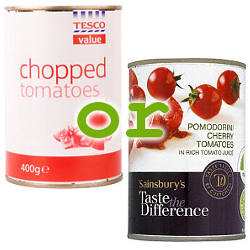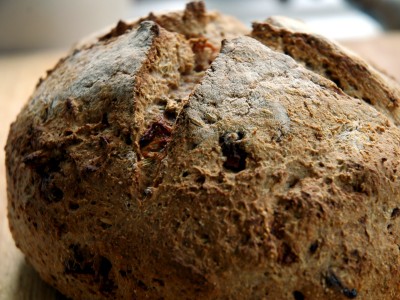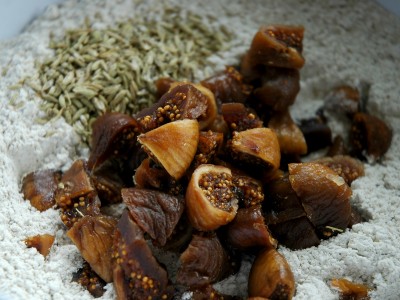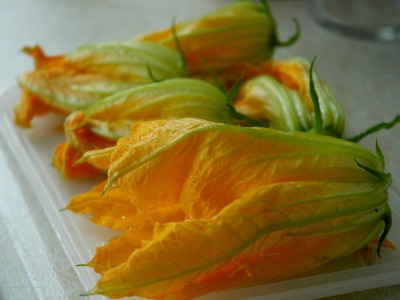Is it easier to be super frugal as part of a couple or as a single person?
I was thinking about this question the other day – is it easier to be super frugal as part of a couple or as a single person? – but I think I should immediately clarify that while I’m interested in hearing people’s thoughts on it, I have no intention of leaving my lovely boyfriend if single “wins”! :)
It generally is cheaper, of course, to be part of a couple – often two incomes coming in but many living costs don’t go up (or don’t go up that much) so regular outgoings on bills are roughly halved. Two people who like spending time together don’t generally need a bigger house/flat than one person; insurance costs don’t really go up when there are two of you; utility bills might go up a bit and council tax will go up when you lose your single person discount – but since you’re sharing it, you’ll be paying less overall.
But while it’s cheaper in general, in my experience, having to consider the other person in the relationship can make it more difficult to be frugal in other parts of your life. I’ve noticed that when the two of us are home at the same time, we’re more likely to put the heating on/light the stove than if there is just one of us there (especially if that one of us is me). Similarly, our meals tend to be more extravagant when we’re both eating than when we’re dining solo – dinner becomes an event which necessitates a proper meal rather than just quick’n’easy snack that will more than suffice. Similarly, John doesn’t expect for me to live in a fashion show but I think I’d probably be even scruffier/pyjama-clad around the house than I am now if my only audience was feline/canine.
John and I are generally on a very similar wavelength when it comes to (not) spending money and that sort of thing but, for example, he buys more expensive bacon than I would or is more likely to put the heating/stove on before me when it’s chilly (he’ll put a jumper & socks on first, of course, but I’d be more likely to get under a blanket too). I’m fussier when buying home furnishings (fabrics, colours etc) so spend more money on that sort of thing than he ever would. John also earns considerably more than me (because he’s in a higher paid profession and works more hours) but even though we largely pool our money, our income disparity means we have different opinions on what is affordable and what isn’t because the same amount of money represents a lot more time worked for me than it does for him.
Basically, I think we’re both much happier to “make do” when we’re home alone. When both of us are here, we settle at a higher unspoken comfort level to possibly avoid upsetting the other unnecessarily.
That might just be us though – I’d love to hear what you think from your experiences.
If you’re in a relationship/have a family at home, do you & your partner/kids have the same frugal outlook? Does it cause any problems? Do you have to compromise on anything? If you have different frugal levels/requirements, how do you make it work?
If you’re single, do you have any habits that you think you’d change if you were living with someone else?
Read MoreHomemade takeout
Steel Kitten has blogged about learning how to make her own kebab meat for homemade donner kebabs and it’s made me think about how we’ve slowly been replacing takeout dinners.
I’ll be honest – we still do eat quite a bit of takeaway/delivery food – but it is less than it used to be. When we lived in Leeds, we were in a prime spot for takeout – we were in the overlapping bit of four different takeout areas so had a huge variety of places to choose from. It was mostly junk food takeout (but done well) but there were a few more better quality places (eg Box Pizza – who when they first started out did fancy burgers too) and restaurants that delivered too. Lots of tasty temptation.
Since moving, we’ve become disillusioned with the takeaway options around here but still have takeout cravings/the urge for lazy comfort food at dinnertime so have started making more of our own takeout favourites at home:
Curries
We are curry fiends. In West Yorkshire, it’s almost rude not to be – there are so many excellent restaurants around. We still eat curries out of the house about once a fortnight but we also make them a lot. A few years ago, we went on a cookery course taught by one of the head chefs of a local restaurant chain and it vastly increased John’s cooking confidence so he’s the one that tends to cook them at home. He blogged a few of our favourite recipes from that course (lamb achar; lemon rice; chicken jalfrezi) but he’s tweaked them over the years so next time he makes them, I’ll document the new versions (especially the keema & chickpea version of the achar – that’s my favourite :) ).
We used to have daal a lot when we were veggie – with rice as a main dish rather than just the side dish it’s relegated to a lot over here. I used this recipe for tarka daal, and this for a yellow split pea one.
Obviously just about the best thing about curry is that it’s one of those foods that tastes better the next day and it freezes really well too. We always cook curries in large quantities (one of the few things we batch cook) so we can have a homemade ready meal/homemade takeout when we’re feeling lazy — healthier and far cheaper than ordering in. Daal doesn’t freeze as well (or rather, whole pulses don’t defrost well in my experience) but wetter soup-y style ones don’t suffer as badly as they’re already mostly/entirely broken down.
Read MoreCost per portion: (some sort of meat curry)
take-out/delivery – about £5-6 a dish, plus extra for rice/chapatis from some places
homemade – (made with organic & local meat) about £2, including rice
Time to make: 1hour+ – but can be batch made and frozen (then takes about 10 mins)Cost per portion: (some sort of veggie daal)
take-out/delivery – about £4-5, plus extra for rice/chapatis from some places
homemade – no more than £1, including rice
Time to make: about half an hour
Fig and fennel seed soda bread recipe
A few weeks ago, I wanted a sweet treat but didn’t have enough butter in the house to make something cake-ish. After a bit of Googling around for inspiration, I came up with this sweet bread instead – and because it doesn’t use yeast and doesn’t need kneading, it’s ready to eat in next to no time.
It’s a little different to my usual soda bread – I’ve made it a few times now to tweak the flavourings but my expert focus groups contradicted each other with their opinions on less or more fennel seeds (same loaf, wildly different opinions), so I’ve made it how I like it, sod them ;) If you like the liquorice taste of fennel seeds, you might want to up it to 5tsp of seeds; if you prefer it to be subtler (but still there in the background), drop it down to 3tsp. And don’t feed it to any of my contrary friends ;)
It can be baked on a flat cookie sheet (dusted with flour or semolina) or in a lidded cast iron casserole dish (like the slow rise bread). The latter traps moisture and reduces the cooking time – but make sure it’s super hot before adding the dough or it’ll stick.
Fig and fennel seed soda bread recipe
Ingredients:
To make soured/acidified milk
300ml of milk
1tbsp of lemon juice
For the bread
450g/1lb of flour: about 200g plain white flour and 250g of rye flour
1tsp of caster sugar
1/2 tsp of salt
2tsp of bicarbonate of soda
2tsp of cream of tartar
4tsp of fennel seeds
175g (ish) of dried figs
A little extra flour/semolina for dusting
“Value” or “Taste the Difference”?
 This month’s Which magazine* includes a section about supermarket food prices (apparently 57% of people are looking for reduced price food more now than they were a year ago, and 60% are using offers more – but 43% think most supermarket promotions are on unhealthy food) and an article about whether we should pick the value version, the standard one or the premium brand of various food products.
This month’s Which magazine* includes a section about supermarket food prices (apparently 57% of people are looking for reduced price food more now than they were a year ago, and 60% are using offers more – but 43% think most supermarket promotions are on unhealthy food) and an article about whether we should pick the value version, the standard one or the premium brand of various food products.
The Which people compared the prices and made relevant ingredient comparisons (eg, the amount of meat in a lasagne ready meal) between each of the different levels, and also did taste tests.
I obviously won’t type out the whole article here but they did recommend the budget option for: butter, natural (not fruit) yogurt, frozen peas, spaghetti and for use when cooking stews etc, carrots, frozen fish, cheddar cheese, kidney beans and tinned tomatoes.
And they suggested the following premium products were worth splashing out on: bacon (less water), beef mince (less fat), sausages (less bulking agents), ham (less water/additives) and ready-meal quiche. They added that you should go premium or at least standard on teabags, fruit yogurts, cornflakes and ready meals like lasagne.
Funnily enough, this roughly matches where we spend our money – John has a thing about expensive bacon & sausages but we’re happy with cheap yoghurt and butter, and use budget carrots and cheese for cooking.
One thing I’d possibly disagree on is the tomatoes: I find the cheapest ones tend to include a lot of “stalk” ends (not a problem in a curry, more of a problem in a quick sauce) and more citric acid & other acidic preservatives (John has an intolerance to lots of acids like that), so we tend to go for standard or premium ones if they’re on offer so as cheap as standard.
Aside from the things they looked at, I often buy value plain flour for basic baking (especially for dusting) and in the non-food sphere, the cleaning products I buy (including washing powder) tend to be the basic range too. Back in the day, when we used to buy them frequently, I also used to rate value oven chips over branded ones. We also buy a lot of super cheap brand stuff – the cost equivalent of value brands, just not from the major supermarkets – like rice, vegetable oil and pickled vegetables or chutneys (mostly from shops specialising in Asian or Mediterranean food stuffs).
Having said that, a peek into our cupboards to “research” this post showed me that by far the most common label is Morrisons standard own brand. I know from experience that most things were bought on offer so they’d have been cheaper or about equal to the budget brands – but bearing in mind Which’s findings, I think we could swap to budget in a few more areas.
What do you think? Do you always go for one product class or mix and match for different things? Do you actually prefer the value option of anything? And is there anything you always pick premium for?
I would love to hear people’s value product recommendations – and ones where the extra money really is worth it for premium!
* I don’t buy Which magazine, or any magazines, regularly but signed up for a subscription in June when we were buying a few things for the house. I don’t swear by Which but lacking any other up-to-date information sources, we thought it was worth at least checking out. I like that Which is about buying quality items that will last; I dislike that it promotes consumption, often in the form of gadgets – whenever John & I read it, we both feel “well, maybe I do need a new camera…” pangs. Baaaaaaaad.
Read MoreExtreme frugality – a good thing or a bad thing?
 Extreme frugality worries me. I’m not talking about when people have to do it from absolute necessity – when they have no other choice because either their kids will starve or they’ll immediately lose their home etc. I mean when already frugal people declare they’re going to tighten their belts to a supermodel-thin level by choice – as various frugal living bloggers do from time to time.
Extreme frugality worries me. I’m not talking about when people have to do it from absolute necessity – when they have no other choice because either their kids will starve or they’ll immediately lose their home etc. I mean when already frugal people declare they’re going to tighten their belts to a supermodel-thin level by choice – as various frugal living bloggers do from time to time.
Of course, personal reduction challenges can be useful in themselves or very interesting as self-reflection exercises. They can help break bad habits, force you to try new things (dried pulses can be fun!) or reveal things about yourself. A great example of this is Consumption Rebellion‘s $2 a day food challenge – it was fascinating to see how quality of food can affect someone in the short term as well as the well known health effects in the long term.
“How low can you go” can be interesting too – watching as people reduce their outgoings by choosing cheaper alternatives or cutting out luxuries – but at the same time, I worry that it can become a one downmanship game, an unspoken “you have to be –> this frugal to be a frugal blogger” competition. I also worry that with some people, there is a martyrdom aspect to their new “extreme” path, as if they’re trying to atone for previously spendthrifty behaviour. They wear their extreme frugality as a hair shirt.
Most importantly though, I worry that general extreme frugality is like a short-term extreme diet. Everyone knows those diets are bad news – that they’re more likely to result in bingeing behaviour at weak spots and people tend to regain all the weight lost, and more. Extreme frugality doesn’t seem sustainable and could impact their (and their families) general attitude to frugal living.
Perhaps I’m being unfair. Obviously “extreme” is a very subjective term and what I might think of as “extreme” frugality isn’t what the people doing it think – although from descriptions, I suspect there is some overlap.
I also suspect it very much depends on the individual’s goals/priorities. My priority is kinda indicated in the blog’s title (and certainly on the About page) – I want to live well on a budget rather than super-frugally because I’m really interested in the ongoing journey not the destination. Admittedly part of that is because I don’t have to live super-frugally – we have enough money for our day to day living, aren’t having to save for anything in particular at the moment and don’t have debts (other than a mortgage) to pay off — but even if I was saving furiously/paying off debts, I think I’d prefer to have a slightly larger amount to spend day to day and less going into savings/debt relief – I want to enjoy my life, to live a really good life. While I suspect it’s easier for me to say this now than if I was living it (life with debt is scarier than most debt-free people think), I’d rather spend a little longer paying off those debts than be miserable and potentially risk my health in the meantime. Perhaps that’s just me though, and I’m worried about “extreme frugal” stints because it’s something I would be reluctant to do, without a very good immediate reason.
What do you think about “extreme frugality”? Have you given it a go at any point? What was your experience? Do you think my worries are unjustified? Do you think I’m being unfair?
I’d love to hear other people’s opinions on this.
(Photo by sufinawaz)
Read MoreFreezing courgette/marrow flowers
We love having marrow flower fritters for lunch at this time of year. Made with eggs, courgettes & marrow flowers from the garden, and served with homegrown salad, they’re very low in terms of food miles – and they’re easy & super tasty to boot.
But at the moment, our 13 (gulp!) courgette plants are cranking out more flowers than we can sensibly use – so I freeze them.
The petals are torn up for the fritters but I think it’s better to freeze them whole so they don’t clump together too much. I treat them like soft fruit – I wash the flowers then spread them out individually on trays before putting them in the freezer. A few hours later (well, probably sooner but I leave them that long), they are frozen solid and can be bagged up for longer term storage.
Because they’re so delicate, they don’t take long to defrost at all – we lift out the half dozen or so we need at a time, and leave them on the side while were gathering/mixing the rest of the ingredients. By the time the flour & eggs are mixed and the courgette chopped and added, they’re ready to go.
I don’t keep them in the freezer for months and months but they’ll certainly be fine for a few weeks, by which point our fresh supply may be waning slightly.
Do you eat marrow (summer squash) flowers? What do you do with them? We’ve got so many that I wouldn’t mind a few more recipes! :)
Read More








